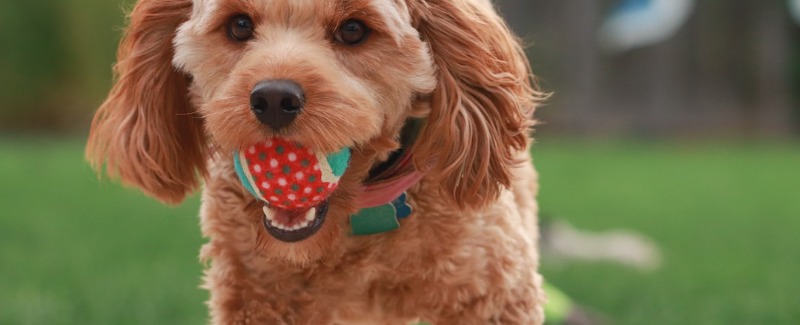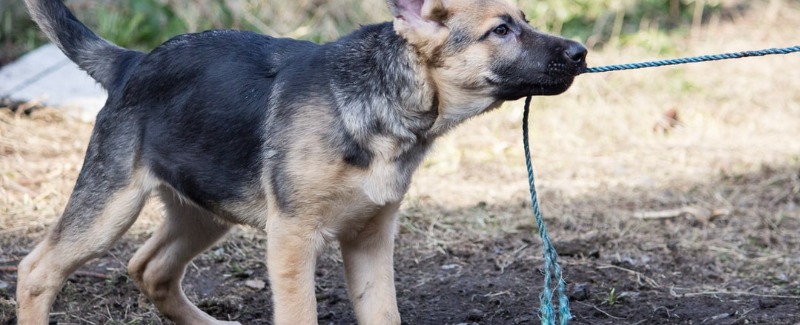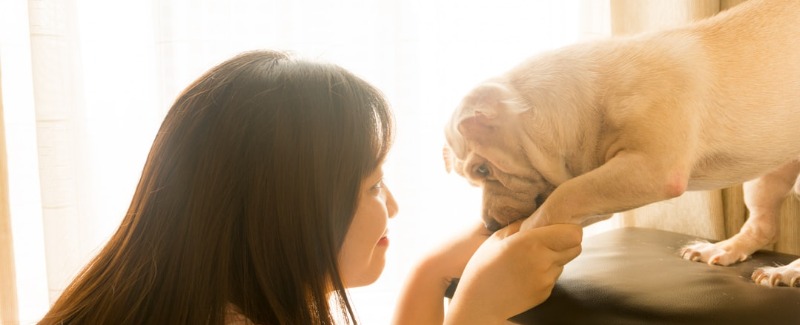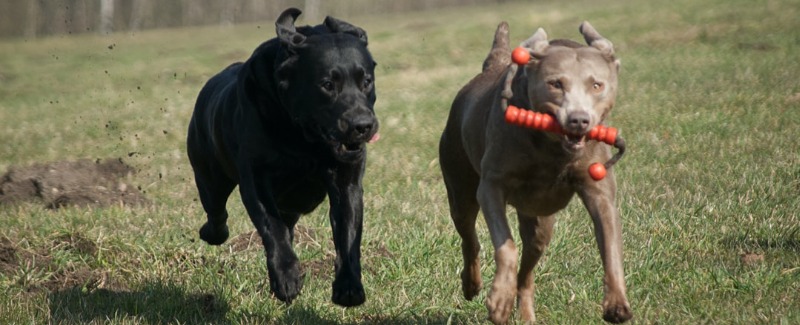There are lots of ways to play with your dog: physical games, games with toys, and mental games. When you play with your dog, it’s important to play in a way that doesn’t undermine your dog’s training or your relationship with him. The way to do that is to control the games, both what games you play and how you play them.
Playing with Toys
Contents
Toys are necessary for some of the games you play with your dog, like fetch and tug of war, and provide your dog with legal outlets for some of his natural hunting behaviors. But whose toys are they, and what toys should you use for which games?
Some toys you use to play with your dog will be your toys, available to your dog only when you bring them out for a game. The toys you use to engage your dog in games of tug-of-war and fetch are examples of toys that belong to you, not your dog. Other toys are your dog’s, and available to him to play with all the time, with or without you. Plush toys, interactive-puzzle toys, and chew toys are your dog’s to play with as he pleases.
Many dogs and people love to play Frisbee, but veterinarians see a lot of injuries from playing with the wrong type or in the wrong way. Only play with soft, flexible flying discs, and keep throws low enough for your dog to catch without jumping or twisting.
The types of toys you choose for your dog and yourself really depend on your dog, his playing and chewing style and strength, and what he likes. Don’t let your dog take and make toys out of your stuff, even if the items are old or unwanted. If you didn’t give it to him, it’s not his! Using old shoes and socks or discarded kid’s toys as dog toys is almost never a good idea, as it will be difficult for your dog to figure out which shoe is legal to chew on and which isn’t. Every dog is different, so you may have to do a little experimentation to see what kind of toys work best for you and your dog. Suggestions for tug and fetch toys are in the sections later in this chapter for those games.
Starting and Ending the Game
All of the games you play with your dog should start when you want them to, not when she shows up and shoves a toy at you. If you do want to play when your dog wants to, great, but have her do a few simple tasks for you first — a few position changes or a brief stay is fine — then engage her in the game of your choice. Better than waiting for your dog to ask you to play is surprising her with a game at a random time, or even in the middle of a training session. Whipping out a toy for a quick game of tug during heeling or recall training is a great way to keep your dog motivated and focused. Interrupting games with a brief training session, even if it’s just one repetition of one behavior, is another way to very subtly but powerfully teach your dog to reliably respond to your commands.
Don’t keep all of your dog’s toys available to him all the time. Like kids, many dogs will pull out everything they own and still not be able to figure out what to play with. To keep your dog interested in his toys, keep a few — three or four — available all the time, and rotate them once or twice a week. New stuff is so much more fun than the stuff you see every day!
How and when you end games is important, too. You always want to end games when your dog still wants to play — in other words, leave her wanting more every time. Decide on some way to let your dog know you’re done playing. Simply putting the toy away (if you’re using one for the type of game you’re playing) and holding up your empty hands with a verbal “All done” or “That’s it” works nicely. Ignore any attempts by your dog to goad you into continuing the game once you’ve decided it’s over. If your dog is already in the habit of controlling the games, you may have to be patient while you wait for her to give up pestering you to play, but she will figure it out if you don’t give in to her demands, providing her with yet more evidence that you’re the leader.
Playing by the Rules
Rules are an important part of every game, including the ones you’ll play with your dog. If your dog doesn’t play by your rules, whatever they are, then he doesn’t get to play. That being said, disciplining yourself not to continue playing when your dog breaks a rule is probably the hardest part.
Making the Rules
Each game you play will have some basic rules. When excited, some dogs have a tendency to lose self-control and get completely hysterical. Rules aren’t there to keep you or your dog from having fun; they’re there to keep the fun safe. The rules can be as simple, like, “if a tooth touches human skin, game over” (in fact, that’s a good rule to apply to every game you play with your dog). Or, your rules can be more formal, like “fetch toys have to be delivered to the hand, and not dropped until they’re asked for.” How simple or elaborate you want the rules of your games to be is up to you, but they should all ultimately include rules that promote safety and deference to people.
Sticking to the Rules
Whatever your rules are, one thing is for sure: if you don’t stick to them, neither will your dog. Inconsistency is always the enemy of dog training, so be clear with your dog about whether the behavior he exhibits during play should be rewarded by continuing the game or punished by ending it. Particularly if you choose to play physical or wrestling-type games with your dog, you need to draw clear, consistent boundaries about just how physical your dog is allowed to get, and that level of physicality has to be acceptable to everybody who plays with him. If your dog plays with small kids or elderly people, but also with teenagers, what the kids and elderly can tolerate has to be the limit all the time, even with the teenagers. People that can’t play by your rules can’t play with your dog, period.





